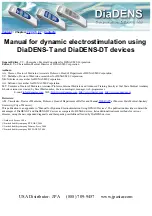
General Training Tips:
Follow these tips on how to get the best out of your iPets Training Collar.
(1) Make training sessions short and positive (between 10-15 minutes long for
each session.) This will enable the dog to keep its attention focused on the trainer.
(2) Train one dog at a time.
(3) During the first initial training sessions, keep the dog in a familiar outdoor
environment. Training in new locations may cause the dog to become distracted,
causing you to reinforce commands with the Collar Receiver more than necessary.
(4) Use a long leash fastened to a non-metallic collar to help the dog's learning.
Ensure the additional collar and leash does not interfere with the Contact Points
on the Collar Receiver. Do not use the remote training collar without a long leash
until your dog is fully trained.
(5) More success will occur by teaching the dog a command first before trying to
reinforce the command with the Remote Transmitter.
(6) For basic obedience training, vibration is more useful.
(7) Issue one obedience command at a time, this will reduce confusion and allow
the dog to remain focused. Do not use the training system for commands that the
dog has not learned.
(8) During training, look for all the positive changes in the dog's behavior and
remember to reinforce them promptly with ample praise and reward.
(9) Avoid over-correcting your dog. Use as little remote correction as possible
during the training process.
(10) When the dog has become apparently perplexed, shift the focus of the training
by drawing the dog's attention to a command they have familiarity. Example:
Tell the dog to sit and give abundant praise and encouragement on successful
completion of the sit command.
(11) Do not use the training system to correct or eliminate forms of aggression or
biting behavior. When the dog is showing signs of aggressive behavior, immediately
contact a professional dog trainer in your local area.
(12) Please keep in mind, that you should keep training sessions short and end
every session on a high note. Stop training and play with the dog as soon the dog
has accomplished a new level of proficiency.
If needing more training tips, please visit us at www.ipets-mall.com or www.facebook.
com/ipetsmall for plenty of resources.
13
14
Ensure the Remote Transmitter and Collar Receiver are powered on.
Check the intensity levels of vibration and static shock, making sure it is not
set to 0.
Ensure the Collar Receiver has sufficient power to operate.
Check the collar to ensure it fits snugly against your dog's neck.
If tested for all of the above and the dog is still not responding, please try re-
pairing the Remote Transmitter and Receiver Collar.
The Remote Transmitter does not work.
Check the battery status of the Remote Transmitter.
If the battery is low, please recharge the Remote Transmitter
My collar-receiver works great for some time, yet it does not work after charging.
First, check if the receiver has been charged correctly. Check the “prepare
the collar receiver” part of the guide for the correct charging method.
Check if the receiver has been powered on.
I want to test the Collar Receiver on myself, but it does not work.
When testing the Collar Receiver with your hands, please touch the two
electrodes simultaneously, as touching one electrode will not work.
Troubleshooting
My dog is not responding after successfully setting up the training system.
Charge the Remote Transmitter and Collar Receiver for 6 hours, separately
before first use.
circumference is smaller than 5.9”, you will be forced to rethread the collar, if the
dog's neck circumference is larger than 22”, this collar may not be suitable for the
dog. This collar is not suitable for dogs under 15lbs.
Is the training system suitable for all dogs?
The collar is adjustable from length 5.9” (15cm) to 19.6” (50cm), if the dog's neck


























